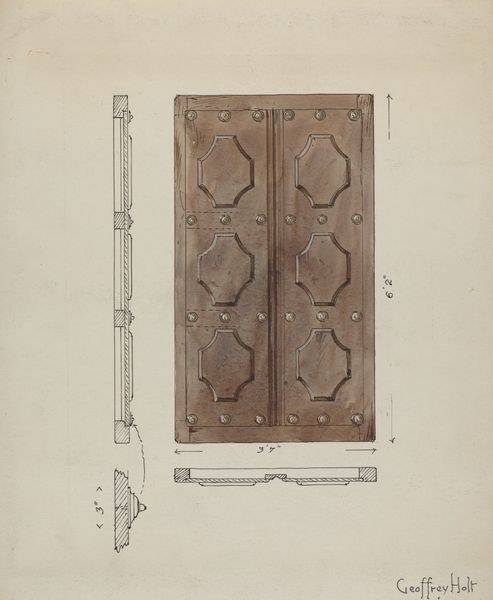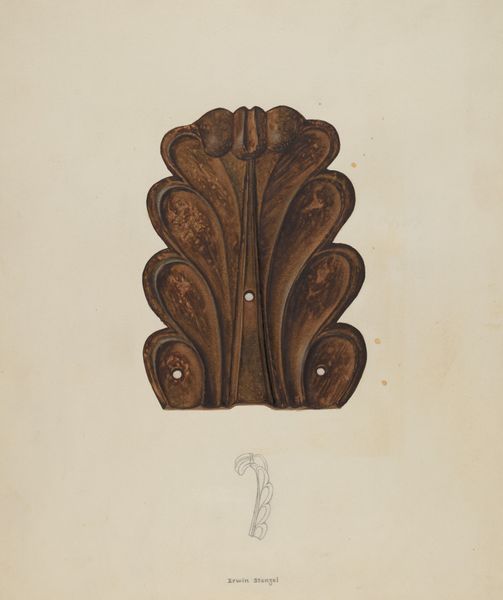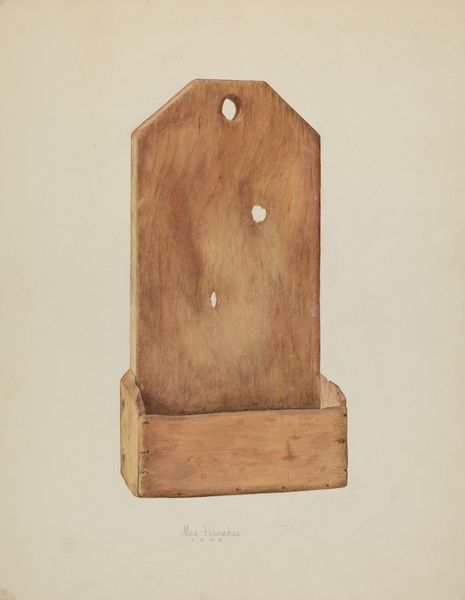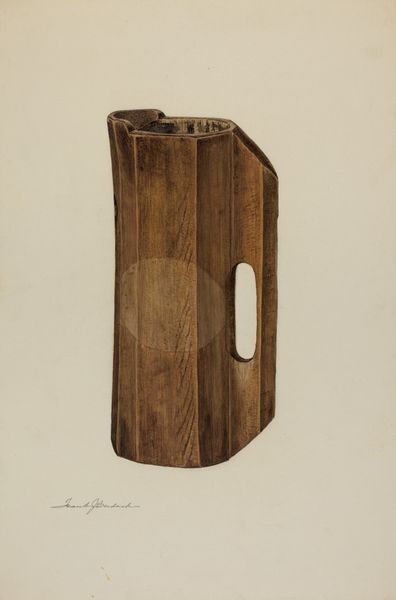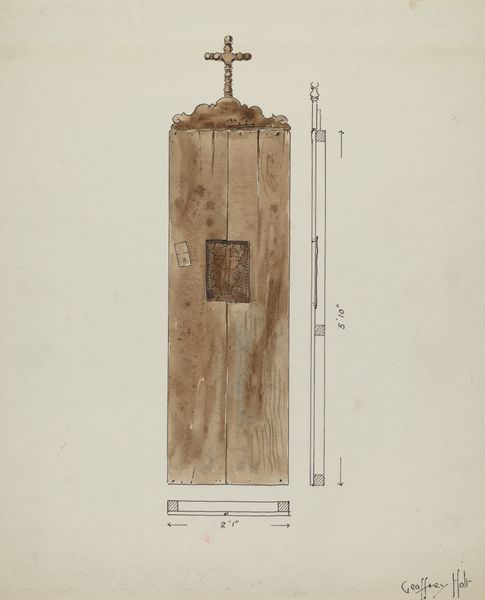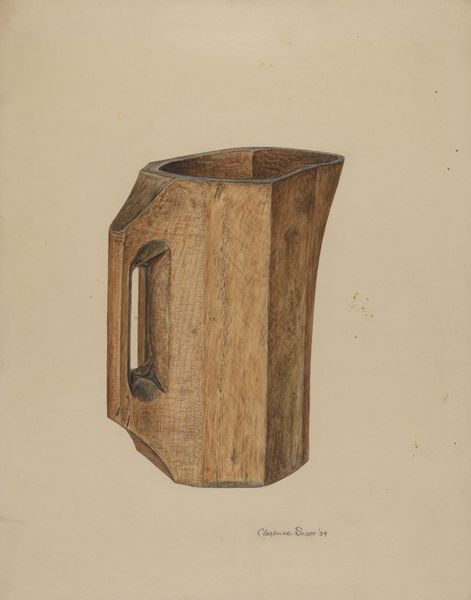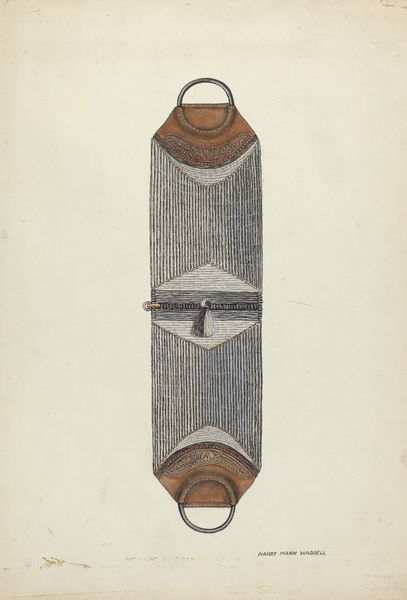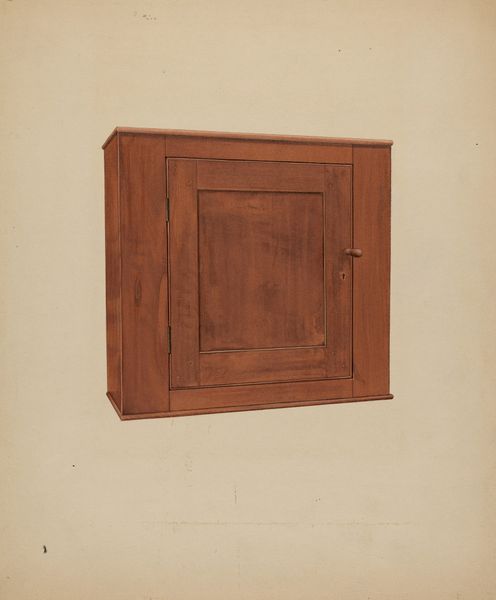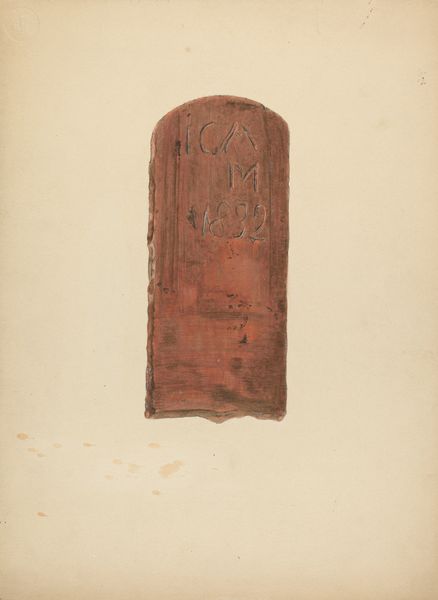
drawing, watercolor
#
drawing
#
watercolor
#
watercolour illustration
#
academic-art
#
watercolor
Dimensions: overall: 28.1 x 22.8 cm (11 1/16 x 9 in.) Original IAD Object: 24" high; 12" wide; 5 1/2" deep
Copyright: National Gallery of Art: CC0 1.0
Curator: Well, it certainly evokes a sense of…order, doesn't it? Utilitarian, even. Is it a painting of some kind of shelving unit? Editor: Indeed. What we have here is a watercolor drawing entitled "Spoon Rack," dating back to around 1937, crafted by Frederick Jackson. And your initial impression aligns quite well, considering the historical context surrounding functional design during that era. Curator: Right. Immediately, I’m thinking about domesticity and labor – the gendered aspects of household objects like spoon racks, and how their very existence reinforced certain social structures. Who *was* putting spoons in racks? And what does it mean that we're looking at its depiction now? Editor: It's fascinating to consider it in that light. Thinking about the role of institutions, particularly museums, in assigning value and therefore perpetuating or challenging certain viewpoints and domestic objects within them is central to how artworks can serve or subvert established power structures. Curator: Precisely! This is especially interesting as it presents as quite a "formal" rendering of something quotidian – even traditionally considered feminine. What artistic choices might reflect or attempt to challenge this relationship, intentionally or not? For instance, this particular vantage point presents it almost like a monumental structure. Editor: Yes, that is an astute point. The artist does present this everyday object with an undeniable sense of formality through a tight, angular perspective. If the spoon rack’s inherent connection is tied to domestic labor, perhaps that labor, and whoever engages with it, is also meant to be taken seriously. One way to interpret this, particularly within a historical framework, is to look at what this object *means* in its broader socio-political environment, how it’s made visible, and whose stories and representations it can promote or neglect. Curator: Exactly! So, is the artist intending to offer a commentary on social hierarchies by depicting a domestic object with this kind of serious rendering? Or is this presentation an accidental echo of values imposed through time? Editor: What’s wonderful about these types of reflections on an image like this, especially in today’s moment, is that both questions can lead to critical engagement. The way we interpret it reveals the politics behind aesthetics, allowing viewers today to confront lingering influences embedded within the mundane. Curator: I think I'll never look at a spoon rack quite the same way again. Editor: And perhaps that altered perspective will extend to our assessment of domestic roles and the values that surround it, just like Frederick Jackson subtly captured them with a utilitarian piece that tells more about its historical time than about spoons alone.
Comments
No comments
Be the first to comment and join the conversation on the ultimate creative platform.
